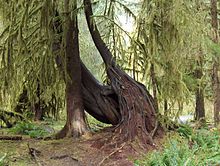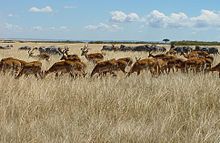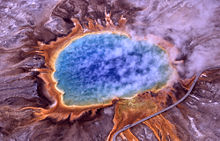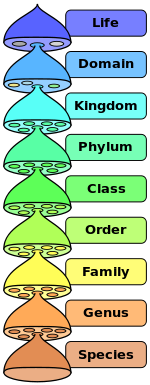
Life
Background Information
SOS Children volunteers helped choose articles and made other curriculum material To compare sponsorship charities this is the best sponsorship link.
| Life ( Biota / Vitae / Eobionti) | ||||||||||||||||||||||||||||||||||||||||||||||||||||||||||||||||||||||||||||||||||||||||||||||
|---|---|---|---|---|---|---|---|---|---|---|---|---|---|---|---|---|---|---|---|---|---|---|---|---|---|---|---|---|---|---|---|---|---|---|---|---|---|---|---|---|---|---|---|---|---|---|---|---|---|---|---|---|---|---|---|---|---|---|---|---|---|---|---|---|---|---|---|---|---|---|---|---|---|---|---|---|---|---|---|---|---|---|---|---|---|---|---|---|---|---|---|---|---|---|
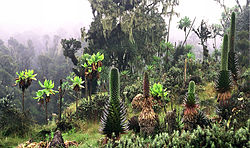 |
||||||||||||||||||||||||||||||||||||||||||||||||||||||||||||||||||||||||||||||||||||||||||||||
| Plants in the Rwenzori Mountains, Uganda | ||||||||||||||||||||||||||||||||||||||||||||||||||||||||||||||||||||||||||||||||||||||||||||||
| Scientific classification |
||||||||||||||||||||||||||||||||||||||||||||||||||||||||||||||||||||||||||||||||||||||||||||||
| Domains and kingdoms | ||||||||||||||||||||||||||||||||||||||||||||||||||||||||||||||||||||||||||||||||||||||||||||||
|
Life on Earth:
|
||||||||||||||||||||||||||||||||||||||||||||||||||||||||||||||||||||||||||||||||||||||||||||||
Life (cf. biota) is a characteristic that distinguishes objects that have signaling and self-sustaining processes from those that do not, either because such functions have ceased (death), or else because they lack such functions and are classified as inanimate. Biology is the science concerned with the study of life.
Any contiguous living system is called an organism. Organisms undergo metabolism, maintain homeostasis, possess a capacity to grow, respond to stimuli, reproduce and, through natural selection, adapt to their environment in successive generations. More complex living organisms can communicate through various means. A diverse array of living organisms can be found in the biosphere of Earth, and the properties common to these organisms—plants, animals, fungi, protists, archaea, and bacteria—are a carbon- and water-based cellular form with complex organization and heritable genetic information.
Scientific evidence suggests that life began on Earth approximately 3.5 billion years ago. In a National Institutes of Health study, the authors hypothesize that if biological complexity increased exponentially during evolution, life in the universe may have begun "10 billion years ago" - more than 5 billion years before the Earth existed. Nonetheless, the mechanism by which life emerged on Earth is unknown although many hypotheses have been formulated. Since then, life has evolved into a wide variety of forms, which biologists have classified into a hierarchy of taxa. Life can survive and thrive in a wide range of conditions. The meaning of life—its significance, origin, purpose, and ultimate fate—is a central concept and question in philosophy and religion. Both philosophy and religion have offered interpretations as to how life relates to existence and consciousness, and on related issues such as life stance, purpose, conception of a god or gods, a soul or an afterlife. Different cultures throughout history have had widely varying approaches to these issues.
Though the existence of life is only confirmed on Earth, many scientists believe extraterrestrial life is not only plausible, but probable. Other planets and moons in the Solar System have been examined for evidence of having once supported simple life, and projects such as SETI have attempted to detect transmissions from possible alien civilizations. According to the panspermia hypothesis, life on Earth may have originated from meteorites that spread organic molecules or simple life that first evolved elsewhere.
Early theories
Materialism
Some of the earliest theories of life were materialist, holding that all that exists is matter, and that life is merely a complex form or arrangement of matter. Empedocles (430 BC) argued that every thing in the universe is made up of a combination of four eternal "elements" or "roots of all": earth, water, air, and fire. All change is explained by the arrangement and rearrangement of these four elements. The various forms of life are caused by an appropriate mixture of elements.
Democritus (460 BC) thought that the essential characteristic of life is having a soul (psyche). Like other ancient writers, he was attempting to explain what makes something a living thing. His explanation was that fiery atoms make a soul in exactly the same way atoms and void account for any other thing. He elaborates on fire because of the apparent connection between life and heat, and because fire moves.
Plato's world of eternal and unchanging Forms, imperfectly represented in matter by a divine Artisan, contrasts sharply with the various mechanistic Weltanschauungen, of which atomism was, by the fourth century at least, the most prominent... This debate persisted throughout the ancient world. Atomistic mechanism got a shot in the arm from Epicurus... while the Stoics adopted a divine teleology... The choice seems simple: either show how a structured, regular world could arise out of undirected processes, or inject intelligence into the system.—R. J. Hankinson, Cause and Explanation in Ancient Greek Thought
The mechanistic materialism that originated in ancient Greece was revived and revised by the French philosopher René Descartes, who held that animals and humans were assemblages of parts that together functioned as a machine. In the 19th century, the advances in cell theory in biological science encouraged this view. The evolutionary theory of Charles Darwin (1859) is a mechanistic explanation for the origin of species by means of natural selection.
Hylomorphism
Hylomorphism is a theory (originating with Aristotle (322 BC)) that all things are a combination of matter and form. Biology was one of his main interests, and there is extensive biological material in his extant writings. In this view, all things in the material universe have both matter and form, and the form of a living thing is its soul (Greek psyche, Latin anima). There are three kinds of souls: the vegetative soul of plants, which causes them to grow and decay and nourish themselves, but does not cause motion and sensation; the animal soul, which causes animals to move and feel; and the rational soul, which is the source of consciousness and reasoning, which (Aristotle believed) is found only in man. Each higher soul has all the attributes of the lower one. Aristotle believed that while matter can exist without form, form cannot exist without matter, and therefore the soul cannot exist without the body.
This account is consistent with teleological explanations of life, which account for phenomena in terms of purpose or goal-directedness. Thus, the whiteness of the polar bear's coat is explained by its purpose of camouflage. The direction of causality (from the future to the past) is in contradiction with the scientific evidence for natural selection, which explains the consequence in terms of a prior cause. Biological features are explained not by looking at future optimal results, but by looking at the past evolutionary history of a species, which led to the natural selection of the features in question.
Vitalism
Vitalism is the belief that the life-principle is non-material. This originated with Stahl (17th century), and held sway until the middle of the 19th century. It appealed to philosophers such as Henri Bergson, Nietzsche, Wilhelm Dilthey, anatomists like Bichat, and chemists like Liebig. Vitalism included the idea that there was a fundamental difference between organic and inorganic material, and the belief that organic material can only be derived from living things. This was disproved in 1828, when Friedrich Wöhler prepared urea from inorganic materials. This Wöhler synthesis is considered the starting point of modern organic chemistry. It is of historical significance because for the first time an organic compound was produced from inorganic reactants.
During the 1850s, Helmholtz, anticipated by Mayer, demonstrated that no energy is lost in muscle movement, suggesting that there were no "vital forces" necessary to move a muscle. These results led to the abandonment of scientific interest in vitalistic theories, although the belief lingered on in pseudoscientific theories such as homeopathy, which interprets diseases and sickness as caused by disturbances in a hypothetical vital force or life force.
Definitions
It is a challenge for scientists and philosophers to define life in unequivocal terms. This is difficult partly because life is a process, not a pure substance. Any definition must be sufficiently broad to encompass all life with which we are familiar, and must be sufficiently general to include life that may be fundamentally different from life on Earth.
Biology
Since there is no unequivocal definition of life, the current understanding is descriptive. Life is considered a characteristic of organisms that exhibit all or most of the following:
- Homeostasis: Regulation of the internal environment to maintain a constant state; for example, electrolyte concentration or sweating to reduce temperature.
- Organization: Being structurally composed of one or more cells — the basic units of life.
- Metabolism: Transformation of energy by converting chemicals and energy into cellular components ( anabolism) and decomposing organic matter ( catabolism). Living things require energy to maintain internal organization (homeostasis) and to produce the other phenomena associated with life.
- Growth: Maintenance of a higher rate of anabolism than catabolism. A growing organism increases in size in all of its parts, rather than simply accumulating matter.
- Adaptation: The ability to change over time in response to the environment. This ability is fundamental to the process of evolution and is determined by the organism's heredity, diet, and external factors.
- Response to stimuli: A response can take many forms, from the contraction of a unicellular organism to external chemicals, to complex reactions involving all the senses of multicellular organisms. A response is often expressed by motion; for example, the leaves of a plant turning toward the sun ( phototropism), and chemotaxis.
- Reproduction: The ability to produce new individual organisms, either asexually from a single parent organism, or sexually from two parent organisms.
These complex processes, called physiological functions, have underlying physical and chemical bases, as well as signaling and control mechanisms that are essential to maintaining life.
Alternatives
To reflect the minimum phenomena required, other biological definitions of life have been proposed, many of these are based upon chemical systems. Biophysicists have commented that living things function on negative entropy. In other words, living processes can be viewed as a delay of the spontaneous diffusion or dispersion of the internal energy of biological molecules towards more potential microstates. In more detail, according to physicists such as John Bernal, Erwin Schrödinger, Eugene Wigner, and John Avery, life is a member of the class of phenomena that are open or continuous systems able to decrease their internal entropy at the expense of substances or free energy taken in from the environment and subsequently rejected in a degraded form. At a higher level, living beings are thermodynamic systems that have an organized molecular structure. That is, life is matter that can reproduce itself and evolve as survival dictates. Hence, life is a self-sustained chemical system capable of undergoing Darwinian evolution.
Others take a systemic viewpoint that does not necessarily depend on molecular chemistry. One systemic definition of life is that living things are self-organizing and autopoietic (self-producing). Variations of this definition include Stuart Kauffman's definition as an autonomous agent or a multi-agent system capable of reproducing itself or themselves, and of completing at least one thermodynamic work cycle. Life can be modeled as a network of inferior negative feedbacks of regulatory mechanisms subordinated to a superior positive feedback formed by the potential of expansion and reproduction. Alternatively, life can be said to consist of things with the capacity for metabolism and motion, or that life is self-reproduction "with variations" or "with an error rate below the sustainability threshold."
Viruses
Viruses are most often considered replicators rather than forms of life. They have been described as "organisms at the edge of life," since they possess genes, evolve by natural selection, and replicate by creating multiple copies of themselves through self-assembly. However, viruses do not metabolize and they require a host cell to make new products. Virus self-assembly within host cells has implications for the study of the origin of life, as it may support the hypothesis that life could have started as self-assembling organic molecules.
Living systems theories
The idea that the Earth is alive is found in philosophy and religion, but the first scientific discussion was by the Scottish scientist James Hutton. In 1785, he stated that the Earth was a superorganism and that its proper study should be physiology. Hutton is considered the father of geology, but his idea of a living Earth was forgotten in the intense reductionism of the 19th century. The Gaia hypothesis, proposed in the 1960s by scientist James Lovelock, suggests that life on Earth functions as a single organism that defines and maintains environmental conditions necessary for its survival.
The first attempt at a general living systems theory for explaining the nature of life was in 1978, by American biologist James Grier Miller. Such a general theory, arising out of the ecological and biological sciences, attempts to map general principles for how all living systems work. Instead of examining phenomena by attempting to break things down into component parts, a general living systems theory explores phenomena in terms of dynamic patterns of the relationships of organisms with their environment. Robert Rosen (1991) built on this by defining a system component as "a unit of organization; a part with a function, i.e., a definite relation between part and whole." From this and other starting concepts, he developed a "relational theory of systems" that attempts to explain the special properties of life. Specifically, he identified the "nonfractionability of components in an organism" as the fundamental difference between living systems and "biological machines."
A systems view of life treats environmental fluxes and biological fluxes together as a "reciprocity of influence", and a reciprocal relation with environment is arguably as important for understanding life as it is for understanding ecosystems. As Harold J. Morowitz (1992) explains it, life is a property of an ecological system rather than a single organism or species. He argues that an ecosystemic definition of life is preferable to a strictly biochemical or physical one. Robert Ulanowicz (2009) highlights mutualism as the key to understand the systemic, order-generating behaviour of life and ecosystems.
Complex systems biology (CSB) is a field of science that studies the emergence of complexity in functional organisms from the viewpoint of dynamic systems theory. The latter is often called also systems biology and aims to understand the most fundamental aspects of life. A closely related approach to CSB and systems biology, called relational biology, is concerned mainly with understanding life processes in terms of the most important relations, and categories of such relations among the essential functional components of organisms; for multicellular organisms, this has been defined as "categorical biology", or a model representation of organisms as a category theory of biological relations, and also an algebraic topology of the functional organization of living organisms in terms of their dynamic, complex networks of metabolic, genetic, epigenetic processes and signaling pathways.
It has also been argued that the evolution of order in living systems and certain physical systems obey a common fundamental principle termed the Darwinian dynamic. The Darwinian dynamic was formulated by first considering how macroscopic order is generated in a simple non-biological system far from thermodynamic equilibrium, and then extending consideration to short, replicating RNA molecules. The underlying order generating process for both types of system was concluded to be basically similar.
Origin
Evidence suggests that life on Earth has existed for about 3.7 billion years, with the oldest traces of life found in fossils dating back 3.4 billion years. All known life forms share fundamental molecular mechanisms, reflecting their common descent; based on these observations, hypotheses on the origin of life attempt to find a mechanism explaining the formation of a universal common ancestor, from simple organic molecules via pre-cellular life to protocells and metabolism. Models have been divided into "genes-first" and "metabolism-first" categories, but a recent trend is the emergence of hybrid models that combine both categories.
There is no current scientific consensus as to how life originated. However, most accepted scientific models build on the following observations:
- The Miller-Urey experiment, and the work of Sidney Fox, show that conditions on the primitive Earth favored chemical reactions that synthesize amino acids and other organic compounds from inorganic precursors.
- Phospholipids spontaneously form lipid bilayers, the basic structure of a cell membrane.
Living organisms synthesize proteins, which are polymers of amino acids using instructions encoded by deoxyribonucleic acid (DNA). Protein synthesis entails intermediary ribonucleic acid (RNA) polymers. One possibility for how life began is that genes originated first, followed by proteins; the alternative being that proteins came first and then genes.
However, since genes and proteins are both required to produce the other, the problem of considering which came first is like that of the chicken or the egg. Most scientists have adopted the hypothesis that because of this, it is unlikely that genes and proteins arose independently.
Therefore, a possibility, first suggested by Francis Crick, is that the first life was based on RNA, which has the DNA-like properties of information storage and the catalytic properties of some proteins. This is called the RNA world hypothesis, and it is supported by the observation that many of the most critical components of cells (those that evolve the slowest) are composed mostly or entirely of RNA. Also, many critical cofactors (ATP, Acetyl-CoA, NADH, etc.) are either nucleotides or substances clearly related to them. The catalytic properties of RNA had not yet been demonstrated when the hypothesis was first proposed, but they were confirmed by Thomas Cech in 1986.
One issue with the RNA world hypothesis is that synthesis of RNA from simple inorganic precursors is more difficult than for other organic molecules. One reason for this is that RNA precursors are very stable and react with each other very slowly under ambient conditions, and it has also been proposed that living organisms consisted of other molecules before RNA. However, the successful synthesis of certain RNA molecules under the conditions that existed prior to life on Earth has been achieved by adding alternative precursors in a specified order with the precursor phosphate present throughout the reaction. This study makes the RNA world hypothesis more plausible.
In 2009, experiments demonstrated Darwinian evolution of a two-component system of RNA enzymes ( ribozymes) in vitro. The work was performed in the laboratory of Gerald Joyce, who stated, "This is the first example, outside of biology, of evolutionary adaptation in a molecular genetic system."
NASA findings in 2011, based on studies with meteorites found on Earth, suggest DNA and RNA components ( adenine, guanine and related organic molecules) may be formed extraterrestrially in outer space.
Conditions
The diversity of life on Earth is a result of the dynamic interplay between genetic opportunity, metabolic capability, environmental challenges, and symbiosis. For most of its existence, Earth's habitable environment has been dominated by microorganisms and subjected to their metabolism and evolution. As a consequence of these microbial activities, the physical-chemical environment on Earth has been changing on a geologic time scale, thereby affecting the path of evolution of subsequent life. For example, the release of molecular oxygen by cyanobacteria as a by-product of photosynthesis induced global changes in the Earth's environment. Since oxygen was toxic to most life on Earth at the time, this posed novel evolutionary challenges, and ultimately resulted in the formation of our planet's major animal and plant species. This interplay between organisms and their environment is an inherent feature of living systems.
All life forms require certain core chemical elements needed for biochemical functioning. These include carbon, hydrogen, nitrogen, oxygen, phosphorus, and sulfur—the elemental macronutrients for all organisms—often represented by the acronym CHNOPS. Together these make up nucleic acids, proteins and lipids, the bulk of living matter. Five of these six elements comprise the chemical components of DNA, the exception being sulfur. The latter is a component of the amino acids cysteine and methionine. The most biologically abundant of these elements is carbon, which has the desirable attribute of forming multiple, stable covalent bonds. This allows carbon-based (organic) molecules to form an immense variety of chemical arrangements. Alternative hypothetical types of biochemistry have been proposed that eliminate one or more of these elements, swap out an element for one not on the list, or change required chiralities or other chemical properties.
Range of tolerance
The inert components of an ecosystem are the physical and chemical factors necessary for life - energy (sunlight or chemical energy), water, temperature, atmosphere, gravity, nutrients, and ultraviolet solar radiation protection. In most ecosystems, the conditions vary during the day and from one season to the next. To live in most ecosystems, then, organisms must be able to survive a range of conditions, called the "range of tolerance." Outside that are the "zones of physiological stress," where the survival and reproduction are possible but not optimal. Beyond these zones are the "zones of intolerance," where survival and reproduction of that organism is unlikely or impossible. Organisms that have a wide range of tolerance are more widely distributed than organisms with a narrow range of tolerance.
To survive, selected microorganisms can assume forms that enable them to withstand freezing, complete desiccation, starvation, high levels of radiation exposure, and other physical or chemical challenges. These microorganisms may survive exposure to such conditions for weeks, months, years, or even centuries. Extremophiles are microbial life forms that thrive outside the ranges where life is commonly found. They excel at exploiting uncommon sources of energy. While all organisms are composed of nearly identical molecules, evolution has enabled such microbes to cope with this wide range of physical and chemical conditions. Characterization of the structure and metabolic diversity of microbial communities in such extreme environments is ongoing.
On 17 March 2013, researchers reported data that suggested microbial life forms thrive in the Mariana Trench, the deepest spot on the Earth. Other researchers reported related studies that microbes thrive inside rocks up to 1900 feet below the sea floor under 8500 feet of ocean off the coast of the northwestern United States. According to one of the researchers,"You can find microbes everywhere — they're extremely adaptable to conditions, and survive wherever they are."
Investigation of the tenacity and versatility of life on Earth, as well as an understanding of the molecular systems that some organisms utilize to survive such extremes, is important for the search for life beyond Earth. In April 2012, scientists reported that lichen could survive and reproduce in a simulated Martian environment.
Form and function
Cells are the basic unit of structure in every living thing, and all cells arise from pre-existing cells by division. Cell theory was formulated by Henri Dutrochet, Theodor Schwann, Rudolf Virchow and others during the early nineteenth century, and subsequently became widely accepted. The activity of an organism depends on the total activity of its cells, with energy flow occurring within and between them. Cells contain hereditary information that is carried forward as a genetic code during cell division.
There are two primary types of cells. Prokaryotes lack a nucleus and other membrane-bound organelles, although they have circular DNA and ribosomes. Bacteria and Archaea are two domains of prokaryotes. The other primary type of cells are the eukaryotes, which have distinct nuclei bound by a nuclear membrane and membrane-bound organelles, including mitochondria, chloroplasts, lysosomes, rough and smooth endoplasmic reticulum, and vacuoles. In addition, they possess organized chromosomes that store genetic material. All species of large complex organisms are eukaryotes, including animals, plants and fungi, though most species of eukaryote are protist microorganisms. The conventional model is that eukaryotes evolved from prokaryotes, with the main organelles of the eukaryotes forming through endosymbiosis between bacteria and the progenitor eukaryotic cell.
The molecular mechanisms of cell biology are based on proteins. Most of these are synthesized by the ribosomes through an enzyme-catalyzed process called protein biosynthesis. A sequence of amino acids is assembled and joined together based upon gene expression of the cell's nucleic acid. In eukaryotic cells, these proteins may then be transported and processed through the Golgi apparatus in preparation for dispatch to their destination.
Cells reproduce through a process of cell division in which the parent cell divides into two or more daughter cells. For prokaryotes, cell division occurs through a process of fission in which the DNA is replicated, then the two copies are attached to parts of the cell membrane. In eukaryotes, a more complex process of mitosis is followed. However, the end result is the same; the resulting cell copies are identical to each other and to the original cell (except for mutations), and both are capable of further division following an interphase period.
Multicellular organisms may have first evolved through the formation of colonies of like cells. These cells can form group organisms through cell adhesion. The individual members of a colony are capable of surviving on their own, whereas the members of a true multi-cellular organism have developed specialties, making them dependent on the remainder of the organism for survival. Such organisms are formed clonally or from a single germ cell that is capable of forming the various specialized cells that form the adult organism. This specialization allows multicellular organisms to exploit resources more efficiently than single cells.
Cells have evolved methods to perceive and respond to their microenvironment, thereby enhancing their adaptability. Cell signaling coordinates cellular activities, and hence governs the basic functions of multicellular organisms. Signaling between cells can occur through direct cell contact using juxtacrine signalling, or indirectly through the exchange of agents as in the endocrine system. In more complex organisms, coordination of activities can occur through a dedicated nervous system.
Classification
The first known attempt to classify organisms was conducted by the Greek philosopher Aristotle (384–322 BC), who classified all living organisms known at that time as either a plant or an animal, based mainly on their ability to move. He also distinguished animals with blood from animals without blood (or at least without red blood), which can be compared with the concepts of vertebrates and invertebrates respectively, and divided the blooded animals into five groups: viviparous quadrupeds (mammals), oviparous quadrupeds (reptiles and amphibians), birds, fishes and whales. The bloodless animals were also divided into five groups: cephalopods, crustaceans, insects (which included the spiders, scorpions, and centipedes, in addition to what we define as insects today), shelled animals (such as most molluscs and echinoderms) and " zoophytes." Though Aristotle's work in zoology was not without errors, it was the grandest biological synthesis of the time and remained the ultimate authority for many centuries after his death.
The exploration of the American continent revealed large numbers of new plants and animals that needed descriptions and classification. In the latter part of the 16th century and the beginning of the 17th, careful study of animals commenced and was gradually extended until it formed a sufficient body of knowledge to serve as an anatomical basis for classification. In the late 1740s, Carolus Linnaeus introduced his system of binomial nomenclature for the classification of species. Linnaeus attempted to improve the composition and reduce the length of the previously used many-worded names by abolishing unnecessary rhetoric, introducing new descriptive terms and precisely defining their meaning. By consistently using this system, Linnaeus separated nomenclature from taxonomy.
The fungi were originally treated as plants. For a short period Linnaeus had classified them in the taxon Vermes in Animalia, but later placed them back in Plantae. Copeland classified the Fungi in his Protoctista, thus partially avoiding the problem but acknowledging their special status. The problem was eventually solved by Whittaker, when he gave them their own kingdom in his five-kingdom system. Evolutionary history shows that the fungi are more closely related to animals than to plants.
As new discoveries enabled detailed study of cells and microorganisms, new groups of life were revealed, and the fields of cell biology and microbiology were created. These new organisms were originally described separately in protozoa as animals and protophyta/thallophyta as plants, but were united by Haeckel in the kingdom Protista; later, the prokaryotes were split off in the kingdom Monera, which would eventually be divided into two separate groups, the Bacteria and the Archaea. This led to the six-kingdom system and eventually to the current three-domain system, which is based on evolutionary relationships. However, the classification of eukaryotes, especially of protists, is still controversial.
As microbiology, molecular biology and virology developed, non-cellular reproducing agents were discovered, such as viruses and viroids. Whether these are considered alive has been a matter of debate; viruses lack characteristics of life such as cell membranes, metabolism and the ability to grow or respond to their environments. Viruses can still be classed into "species" based on their biology and genetics, but many aspects of such a classification remain controversial.
In the 1960s a trend called cladistics emerged, arranging taxa based on clades in an evolutionary or phylogenetic tree.
| Linnaeus 1735 |
Haeckel 1866 |
Chatton 1925 |
Copeland 1938 |
Whittaker 1969 |
Woese et al. 1990 |
Cavalier-Smith 1998 |
|---|---|---|---|---|---|---|
| 2 kingdoms | 3 kingdoms | 2 empires | 4 kingdoms | 5 kingdoms | 3 domains | 6 kingdoms |
| (not treated) | Protista | Prokaryota | Monera | Monera | Bacteria | Bacteria |
| Archaea | ||||||
| Eukaryota | Protoctista | Protista | Eukarya | Protozoa | ||
| Chromista | ||||||
| Vegetabilia | Plantae | Plantae | Plantae | Plantae | ||
| Fungi | Fungi | |||||
| Animalia | Animalia | Animalia | Animalia | Animalia |
Extraterrestrial life
Earth is the only planet known to harbour life. Other locations within the Solar System that may host life include subsurface Mars, the atmosphere of Venus, and subsurface oceans on some of the moons of the gas giant planets. The Drake equation, which predicts the number of extraterrestrial civilizations in our galaxy with which we might come in contact, has been used to discuss the probability of life elsewhere, but many of the variables in this equation are difficult to estimate.
The region around a main sequence star that could support Earth-like life on an Earth-like planet is known as the habitable zone. The inner and outer radii of this zone vary with the luminosity of the star, as does the time interval during which the zone survives. Stars more massive than the Sun have a larger habitable zone, but remain on the main sequence for a shorter time interval. Small red dwarf stars have the opposite problem, with a smaller habitable zone that is subject to higher levels of magnetic activity and the effects of tidal locking from close orbits. Hence, stars in the intermediate mass range such as the Sun may have a greater likelihood for Earth-like life to develop. The location of the star within a galaxy may also have an impact on the likelihood of life forming. Stars in regions with a greater abundance of heavier elements that can form planets, in combination with a low rate of potentially habitat-damaging supernova events, are predicted to have a higher probability of hosting planets with complex life.
Panspermia, also called exogenesis, is the hypothesis that life originated elsewhere in the universe and subsequently transferred to Earth in the form of spores via meteorites, comets, or cosmic dust. Conversely, terrestrial life may be seeded in other solar systems through directed panspermia, to secure and expand some terrestrial life forms. Astroecology experiments with meteorites show that Martian asteroids and cometary materials are rich in inorganic elements and may be fertile soils for microbial, algal and plant life, for past and future life in our and other solar systems.
Research
In October 2011, scientists found using spectroscopy that cosmic dust contains complex organic matter (specifically, aromatic- aliphatic organic solids) that could be created naturally, and rapidly, by stars. The compounds are so complex that their chemical structures resemble the makeup of coal and petroleum; such chemical complexity was previously thought to arise only from living organisms. These observations suggest that organic compounds introduced on Earth by interstellar dust particles could serve as basic ingredients for life due to their surface-catalytic activities.
In September 2012, NASA scientists reported that polycyclic aromatic hydrocarbons (PAHs), subjected to interstellar medium (ISM) conditions, are transformed, through hydrogenation, oxygenation and hydroxylation, to more complex organics - "a step along the path toward amino acids and nucleotides, the raw materials of proteins and DNA, respectively". Further, as a result of these transformations, the PAHs lose their spectroscopic signature which could be one of the reasons "for the lack of PAH detection in interstellar ice grains, particularly the outer regions of cold, dense clouds or the upper molecular layers of protoplanetary disks."
On August 29, 2012, astronomers at Copenhagen University reported the detection of a specific sugar molecule, glycolaldehyde, in a distant star system. The molecule was found around the protostellar binary IRAS 16293-2422, which is located 400 light years from Earth. Glycolaldehyde is needed to form ribonucleic acid, or RNA, which is similar in function to DNA. This finding suggests that complex organic molecules may form in stellar systems prior to the formation of planets, eventually arriving on young planets early in their formation.
Death
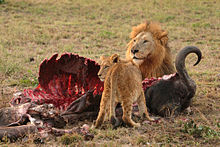
Death is the permanent termination of all vital functions or life processes in an organism or cell. It can occur as a result of an accident, medical conditions, biological interaction, malnutrition, poisoning, senescence, or suicide. After death, the remains of an organism re-enter the biogeochemical cycle. Organisms may be consumed by a predator or a scavenger and leftover organic material may then be further decomposed by detritivores, organisms that recycle detritus, returning it to the environment for reuse in the food chain.
One of the challenges in defining death is in distinguishing it from life. Death would seem to refer to either the moment life ends, or when the state that follows life begins. However, determining when death has occurred requires drawing precise conceptual boundaries between life and death. This is problematic, however, because there is little consensus over how to define life. The nature of death has for millennia been a central concern of the world's religious traditions and of philosophical inquiry. Many religions maintain faith in either a kind of afterlife or reincarnation for the soul, or resurrection of the body at a later date.
Extinction is the process by which a group of taxa or species dies out, reducing biodiversity. The moment of extinction is generally considered the death of the last individual of that species. Because a species' potential range may be very large, determining this moment is difficult, and is usually done retrospectively after a period of apparent absence. Species become extinct when they are no longer able to survive in changing habitat or against superior competition. In Earth's history, over 99% of all the species that have ever lived have gone extinct; however, mass extinctions may have accelerated evolution by providing opportunities for new groups of organisms to diversify.
Fossils are the preserved remains or traces of animals, plants, and other organisms from the remote past. The totality of fossils, both discovered and undiscovered, and their placement in fossil-containing rock formations and sedimentary layers ( strata) is known as the fossil record. A preserved specimen is called a fossil if it is older than the arbitrary date of 10,000 years ago. Hence, fossils range in age from the youngest at the start of the Holocene Epoch to the oldest from the Archaean Eon, up to 3.4 billion years old.
Artificial life
Artificial life is a field of study that examines systems related to life, its processes, and its evolution through simulations using computer models, robotics, and biochemistry. The study of artificial life imitates traditional biology by recreating some aspects of biological phenomena. Scientists study the logic of living systems by creating artificial environments—seeking to understand the complex information processing that defines such systems. While life is, by definition, alive, artificial life is generally referred to as data confined to a digital environment and existence.
Synthetic biology is a new area of biological research and technology that combines science and biological engineering. The common goal is the design and construction of new biological functions and systems not found in nature. Synthetic biology includes the broad redefinition and expansion of biotechnology, with the ultimate goals of being able to design and build engineered biological systems that process information, manipulate chemicals, fabricate materials and structures, produce energy, provide food, and maintain and enhance human health and our environment.
